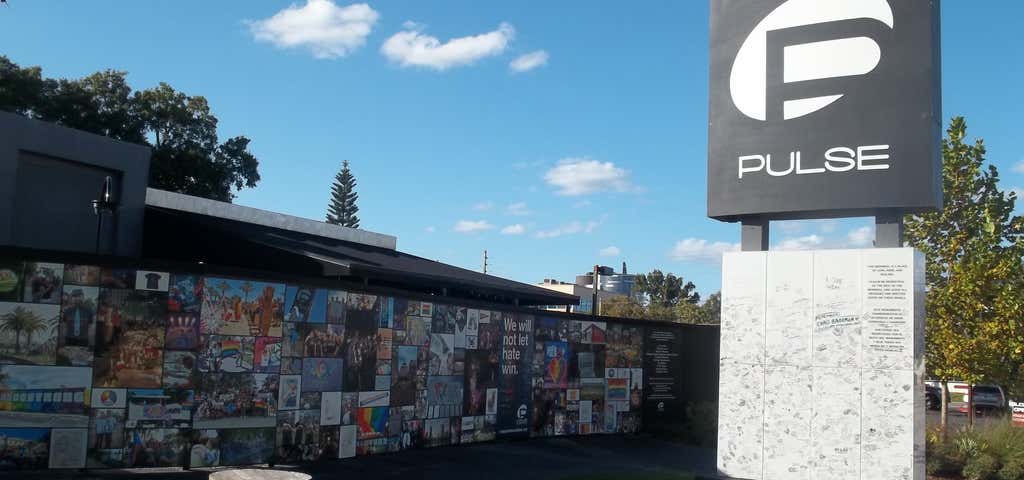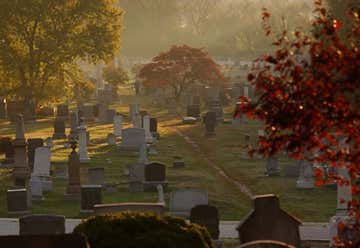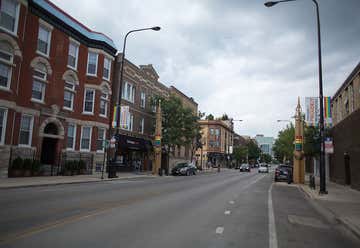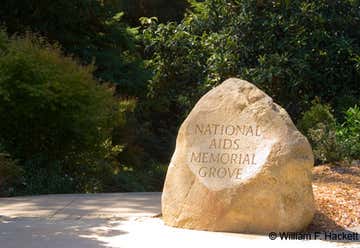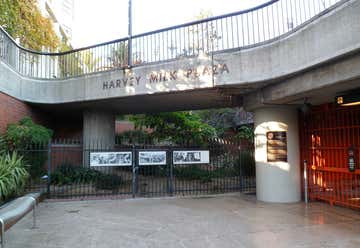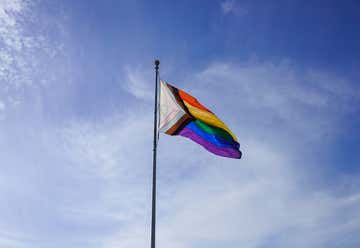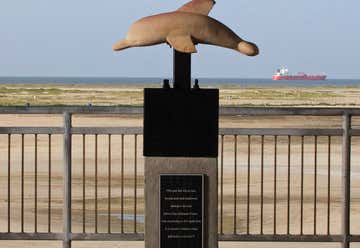Anyone who has recently attended a Pride event may have a hard time believing that identifying as part of the LGBTQ+ community doesn't always feel like a constant party. But a peak in the rainbow-colored rearview mirror reveals decades of discrimination, danger, and tireless work by grassroots activists and allies. Behind the glitter and glam are dozens of places recognized by the National Park Service as LGBTQ+ Heritage sites—and the fight for equality continues today in legislatures, organizations, and private homes around the country.
During Pride Month and beyond, you can play a game of drag bingo on Fire Island, get kinky at the Leather Archives and S&M Museum in Chicago, or pay your respects to the more than 105,000 individuals memorialized in the 54-ton AIDS Memorial Quilt. Here are some of our favorite stops on a cross-country road trip celebrating and honoring those who fought for the freedom to love and be fabulous.
Since at least the 1940s, two Fire Island hamlets—Cherry Grove and The Pines—have been known as safe havens for the LGBTQ community. Visitors are welcomed to the island by two enormous flags flapping fiercely in the breeze: one rainbow, and one traditional stars-and-stripes. Tame, white-tailed deer far outnumber the year-round residents (about 15), but in the summer the population of Cherry Grove swells to 2,000. The town has 250 homes, 2 miles of beaches, bars, theaters, restaurants, and small shops. The Cherry Grove Community House and Theatre—the oldest continually operating LGBTQ summer theater in the country—was listed on the National Register of Historic Places in 2013.
At 1:20 a.m. on June 28, 1969, eight police officers raided the Stonewall Inn, which, at the time, was the largest gay establishment in the U.S. Pennies, bottles, and bricks were thrown—everything inside of the Stonewall had been destroyed, but a movement was born. Over the years the space has been host to a bagel sandwich shop, a Chinese restaurant, and a shoe store. The bar reopened in 2007 under new management and currently hosts drag shows, trivia nights, karaoke, bingo, private parties, and fundraisers. The 7.7-acre Stonewall National Monument, located in Christopher Park across the street from the bar, was designated as such in 2016.
Operating as a bar in New York City's West Village since the late 1800s, Julius' was a popular speakeasy during Prohibition and began to attract members of the LGBTQ community in the 1950s. Three years before the Stonewall riots, on April 21, 1966, four activists staged a "sip in" at Julius' to draw attention to New York State's regulation prohibiting bars and restaurants from serving homosexuals. The cozy space was a prominent filming location for the 2018 movie Can You Ever Forgive Me? starring Melissa McCarthy and Richard E. Grant.
Alice Austen, born in 1866, was one of the first female photographers in the U.S. to work outside of a studio. For 53 years, Austen was in a committed relationship with Gertrude Tate, and the two of them lived together in what is now the Alice Austen House Museum for 30 of those years. The photographer was known as a rebel who went against the expectations of women during the Victorian era, and her work provides a rare glimpse into lesbian relationships in the late 1800s.
Historic Congressional Cemetery was the first national burying ground in the U.S.—predating Arlington by at least 50 years. The cemetery's "gay corner" comprises the graves of more than 30 LGBTQ veterans and activists including Frank Kameny, Barbara Gittings, and Leonard Matlovich. Matlovich's black granite stone—reminiscent of the Vietnam Veterans Memorial—is engraved with the words “A gay Vietnam veteran,” and a heart-wrenching epitaph (carved below two pink granite triangles): “When I was in the military, they gave me a medal for killing two men, and a discharge for loving one.”
Celebrate the life and art of Pittsburgh-born pop art icon Andy Warhol. He’s so iconic that the Andy Warhol Museum is the largest museum in the U.S. dedicated to a single artist. A popular gay figure in the 1960s, ‘70s, and ‘80s, Warhol’s work attracted the likes of Hollywood celebrities and socialites. View a live feed of his gravesite (and the Campbell’s soup cans left by fans) or take an artist-led tour on the last Saturday of every month highlighting Warhol’s significant contributions to the queer community. The museum, one of four Carnegie Museums in Pittsburgh, also hosts performances by LGBTQ artists throughout the year.
The museum is located across the Andy Warhol Bridge and down the street from Randyland, gay artist Randy Gilson’s colorful house-turned-museum.
The Legacy Walk is a dynamic outdoor LGBTQ history exhibit in the Lakeview neighborhood of Chicago, which is known nationally and internationally as "Boystown." Along the half mile of the North Halsted Street Corridor, between Belmont Avenue and Grace Street, 10 pairs of 25-foot-tall decorative steel Rainbow Pylons define the nexus of Chicago's LGBTQ community.
Not for the overly modest, Chicago’s Leather Archives & Museum is dedicated to leather, fetish, and BDSM history and culture. Chuck Renslow and Tony DeBlase, two icons in the Chicago gay community, founded the museum in 1991 as a way to preserve items relevant to the leather and kink scene. Many of these artifacts were lost during the AIDS crisis, and the museum plays a big role in safekeeping this important part of LGBTQ history.
June 5, 2021, marked 40 years since the first cases of AIDS were reported in the U.S. The National AIDS Memorial Grove in San Francisco's Golden Gate Park started as a way to honor the lives lost to the pandemic (more than 700,000 to date in the U.S.), and it continues to offer healing to survivors and fight against stigma and hate.
This plaza at the Castro Muni Metro subway station commemorates Harvey Milk, San Francisco community activist and the first openly gay elected official in California. Milk moved to the Castro neighborhood in the 1970s and only served 11 months in office (passing anti-discrimination legislation) before he was assassinated at City Hall on November 27, 1978.
Located in the heart of San Diego, Hillcrest is known as the center of the city’s LGBTQ scene. Packed with gay and lesbian bars, renowned restaurants, and cute boutiques, this vibrant neighborhood is also home to a weekly farmer’s market and one of the largest Pride parades in the country. The 30-foot Hillcrest Pride Flag is permanently welcoming everyone—no exceptions—to the neighborhood at the corner of University Avenue and Normal Street.
Artist Joe Joe Orangias, writer Sarah Sloane, and scientist Frank Prega created Galveston's Pink Dolphin Monument, dedicated to celebrating diversity. The pink dolphin was carved from red sandstone quarried in nearby Corpus Christi, and inspired by Galveston’s Pink Dolphin Tavern and the Pink Posse (a local LGBTQ+ activist group) logo.
Home to one of the largest gay archives and libraries in the U.S., the Stonewall Gallery National Museum & Archives in Fort Lauderdale, Florida, honors the LGBTQ movement sparked by the 1969 Stonewall Riots in New York City, but has no direct link to the historic bar. The nearly 50-year-old museum offers an annual schedule of exhibitions and public programs pertaining to LGBTQ themes.
The former Pulse Nightclub is now an interim memorial to the 49 victims of one of the deadliest mass shootings in the U.S. The site will eventually become a permanent memorial and museum, spearheaded by the onePULSE Foundation, which was founded by the nightclub’s owner, Barbara Poma, to help honor the lives lost on June, 2016. Visitors can reflect at three viewing areas or leave flowers and mementos at the offering wall. The site also includes a ribbon wall of photographs, a digital guest book, a survivors’ grove, and a place to write a message on the nightclub’s original sign.
Banner Photo Credit: via Wikipedia
Roadtrippers
Roadtrippers helps you find the most epic destinations and detours—from roadside attractions to natural wonders and beyond.
